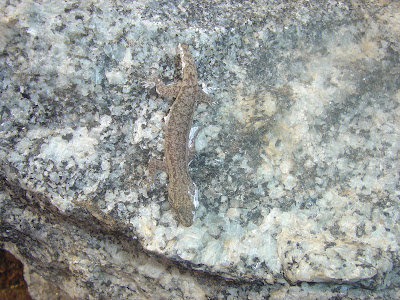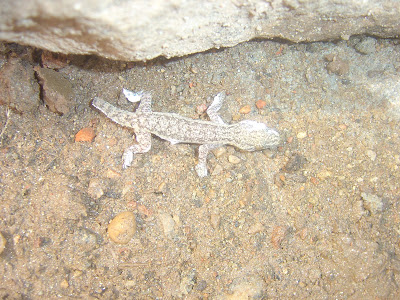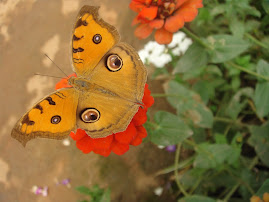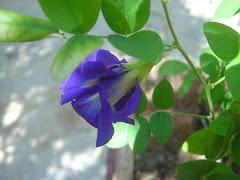As the days grow shorter and colder, many winged creatures
have gone into hibernation. But there are some still out
there in full force, namely butterflies. If you remember
some of my older posts, I've whined about not being able
to photograph these beauties with wings wide open...Ah,
seems like that's history now! Ta da!

In my dream did I hear the secret moonlit whispers of the
butterfly fairies Midnight Convention where they decided
Terra Farmer had suffered enough?! And with a magical flutter
of a hundred-splendoured wings and a swish of anthers they've
granted me my wish! Too hazy to recollect now but they're
definitely 'still there' when I click away.

This beauty on my Money Plant (a.k.a. Devil's Ivy) and the Dumb
Cane is the Grey Pansy ( Junonia atlites). The underside is pale
with faint markings. This variety is common near water bodies.

There are many more on the bamboo grove. They're mostly
brown, and rather than being near flowers they seem to
feed on decaying matter.

This one does look like the Common Indian Crow butterfly
(Euploea core). I found out that my home state, Assam, has
over 500 species of butterflies. Although it has only 2.64%
of India's landmass, it has 50% of the butterflies found in
the entire country. Isn't that wonderful? However, there's
very little conservation activity in third world countries
and India too lags behind, here.

Found this swallowtail amidst all the tangle recently. Since
then this area has been cleaned up!

A skipper too! As I was about to click, it suddenly took off.
Just take a look at that proboscis!

Now for some 'beecrobatics'! This one ( not sure about the name)
does not look like my usual dead-bamboo-loving carpenters. But
it has a fat body and loves the iron rod sticking out of my
neighbour's wall.


Dead and dewy--a carpenter bee. I'd seen it trying to clamber
up this planter a day before. A few bees, those who missed the
hibernation bus, and may not have timed their movements right,
were in the backyard, in different stages of dying. They
were so sluggish, they could barely move. Trying to help
them was useless. They simply coud not clamber back into
the bamboo opening even with a little help from me.

Found this lone red flitting about yesterday just as
I was wondering whether they'd all said their goodbyes.

And this little swinger on the coconut fronds was snapped
about a week ago. Just two types seen recently.


Early in the morning, as I was taking dewy shots, I found this
very fuzzy, white moth on the underside of a palm frond. Clever!

We see so many moths around the house. Many of them are pale--
either white or cream with brown splotches. Since the bedroom
floor's almost the same colour as this moth, I quickly placed
it on my phone for the contrast.
I hope you have enjoyed viewing what could well be my last
winged visitors this year. Except for the butterflies...
(maybe).































































































.jpg)
































